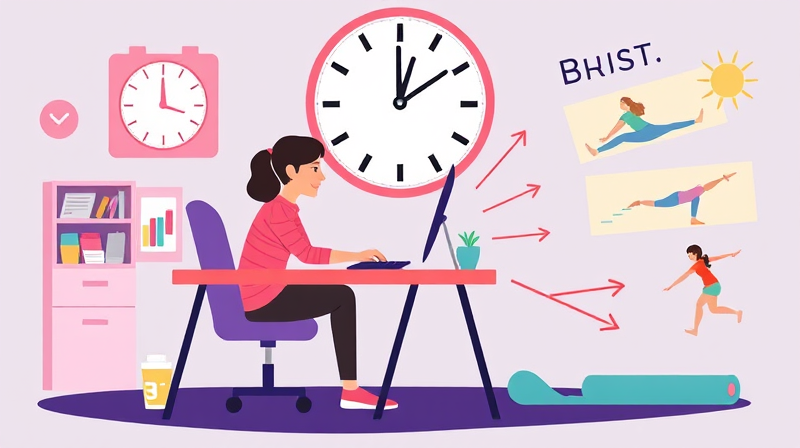In today’s fast-paced world, maintaining a regular exercise routine is more important than ever. Many people find themselves struggling with stress, low energy, and overall well-being. However, by creating a long-term exercise plan, you can not only overcome these challenges but also build a foundation for a healthier lifestyle. A well-structured exercise plan is designed to fit your unique preferences and life schedule while ensuring that you gain all the benefits of physical activity on a daily basis.
Understanding that starting an exercise routine may feel overwhelming for some, the key is to start small, set achievable goals, and gradually increase your activity level. Remember, every single bit of movement counts. Over time, these small changes accumulate and can lead to significant improvements in your overall health.
The Pillars of a Well-Rounded Exercise Plan
When creating your long-term plan, it is essential to consider three main types of physical activity. Each type brings its own set of benefits and together they provide a comprehensive approach to fitness and well-being.
Aerobic Exercise: This involves activities that get your heart rate up and improve breathing. Regular aerobic exercise, like brisk walking, cycling, or dancing, enhances cardiovascular health and can be a great way to de-stress. Aim for at least 30 minutes of such activity most days of the week, ensuring that you progress towards the recommended 150 minutes (or more) per week.
Strength Training: Engaging in activities such as resistance exercises, weightlifting, or even simple bodyweight exercises helps build muscle and strengthen bones. Performing strength training on 2 or more days per week is a guideline that can help in improving muscle tone and overall strength.
Balance and Flexibility: Incorporating exercises like yoga, tai chi, or stretching into your routine helps enhance flexibility and balance. These activities are not only relaxing but also crucial in reducing the risk of injury, especially as you age.
In summary, a balanced routine should include a mix of aerobic, strength, and flexibility routines. This diversity not only keeps your exercise regimen interesting but also ensures that all aspects of physical fitness are covered, thereby boosting daily energy levels and overall well-being.
Here are a few key points to consider when planning your exercise routine:
- Start Slowly: For beginners, it is important to begin with shorter sessions and gradually increase both duration and intensity.
- Set Realistic Goals: Setting achievable targets is a way to prevent burnout and keep you motivated over the long term.
- Choose Enjoyable Activities: The more you enjoy what you’re doing, the more likely you are to stick with it over time.
- Schedule Regular Exercise: Consistency is key. Mark exercise sessions on your calendar to ensure they become a natural part of your daily routine.
- Mix It Up: Variety not only helps in avoiding boredom but also works different muscle groups, providing a balanced workout.
- Track Progress: Leveraging fitness apps or activity trackers can help monitor your growth and maintain a positive outlook on your progress.
It is also important to emphasize the benefits of long-term exercise. Apart from enjoyable physical benefits such as increased muscle tone and endurance, regular physical activity significantly boosts mental health. Exercise has been scientifically shown to improve mood, reduce anxiety, and even combat depression. Also, engaging in physical activity on a daily basis can lead to better sleep quality and increased cognitive function, making it easier for you to handle day-to-day tasks.
Exploring the benefits further, a consistent exercise regimen leads to:
- Improved mood and a reduction in stress levels.
- Enhanced cognitive function, which helps delay the onset of mental decline and improves concentration.
- Better sleep quality, contributing to overall energy and alertness during the day.
- A stronger immune system that not only fights off illnesses more efficiently but also keeps chronic conditions at bay.
Tips for Integrating Exercise into Your Daily Life: It is important to create habits that transform your workout sessions into an enjoyable ritual rather than a chore. Here are a few tips to help you succeed:
- Make it a Habit: Incorporate physical activity steadily into your everyday schedule until it becomes second nature.
- Find an Exercise Buddy: Exercising with a friend or joining group classes can provide extra motivation and make your workout sessions more fun.
- Be Flexible: There will be days when you can’t follow your routine perfectly, but don’t get discouraged; consistency over time matters most.
- Listen to Your Body: Monitoring what your body tells you is crucial. If you feel pain or discomfort, adjust your plan and consult with a professional if needed.
Remember, every effort counts toward building a healthier, more vibrant life. Establishing a long-term exercise plan is not about achieving perfection but rather about making ongoing improvements to your daily routine and overall lifestyle. By focusing on a balanced approach that includes various forms of exercise and by setting realistic goals, you can experience sustained benefits that extend well beyond physical fitness.
In the journey towards improved well-being, let exercise be a form of self-love. With every push, stretch, or walk, you are investing in your future self. Stay motivated and remember that the small steps you take today can lead to monumental improvements in your quality of life tomorrow.








